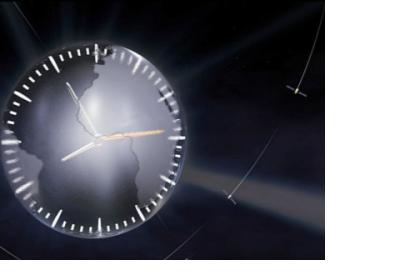Satellite navigation systems are based on the highly precise measurement of time. A receiver on the ground pinpoints their positions by calculating how long signals from satellites in orbit take to reach it. This allows the receiver to fix the satellites' longitude, latitude and time. Atomic clocks on each satellite keep time to a matter of nanoseconds – billionths of a second – synchronised by a worldwide ground network.
Now, ESA contributes to this network with ultra-accurate atomic clocks provided by the Agency’s Navigation Laboratory. They have joined the global effort setting Coordinated Universal Time down to a billionth of a second. Their accuracy will be beneficial to the performance assessment of the Galileo satnav system as well as to many space applications beyond just navigation, such as precision technical experiments or synchronisation of telecommunications and deep-space ground stations.

